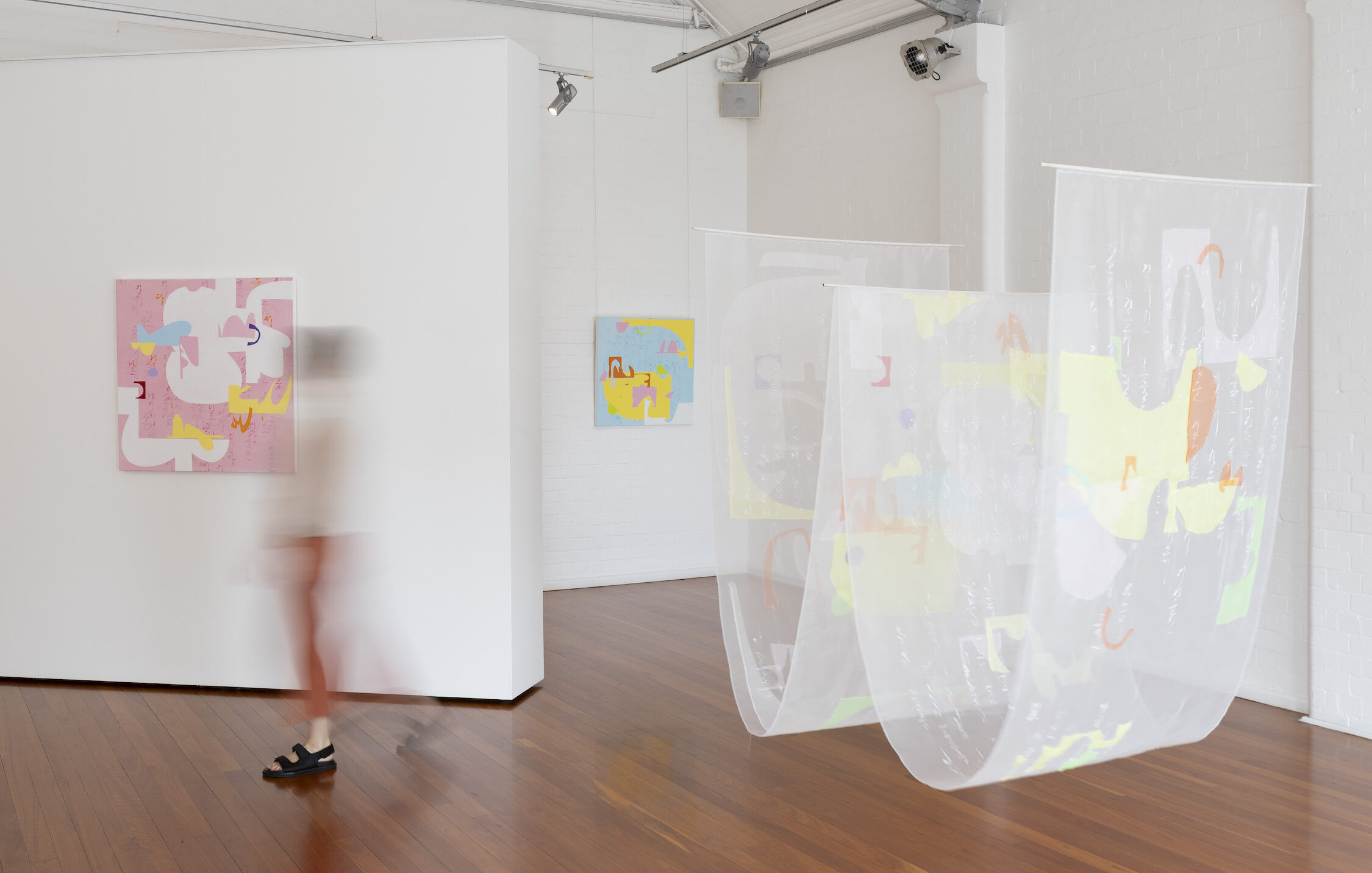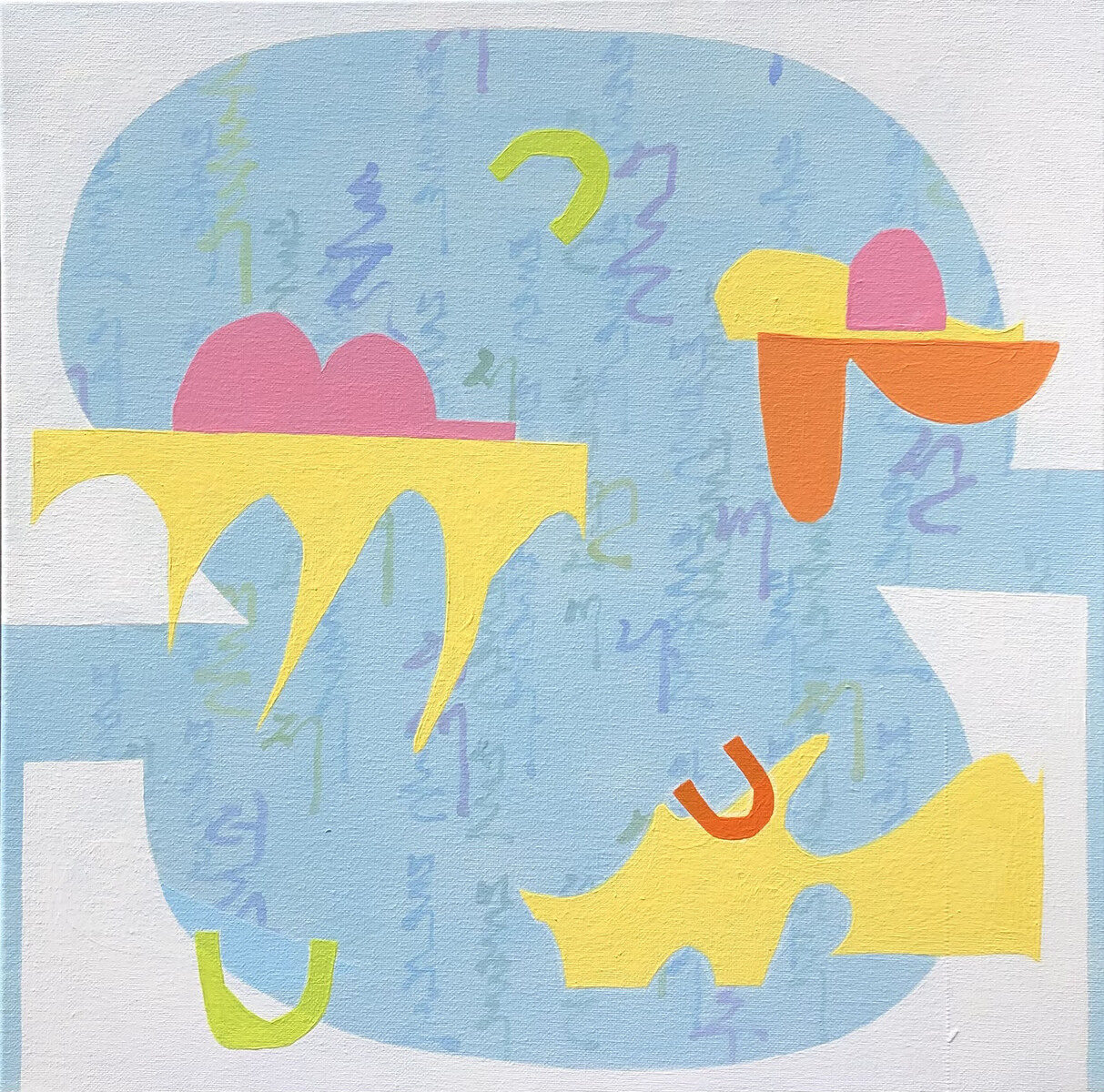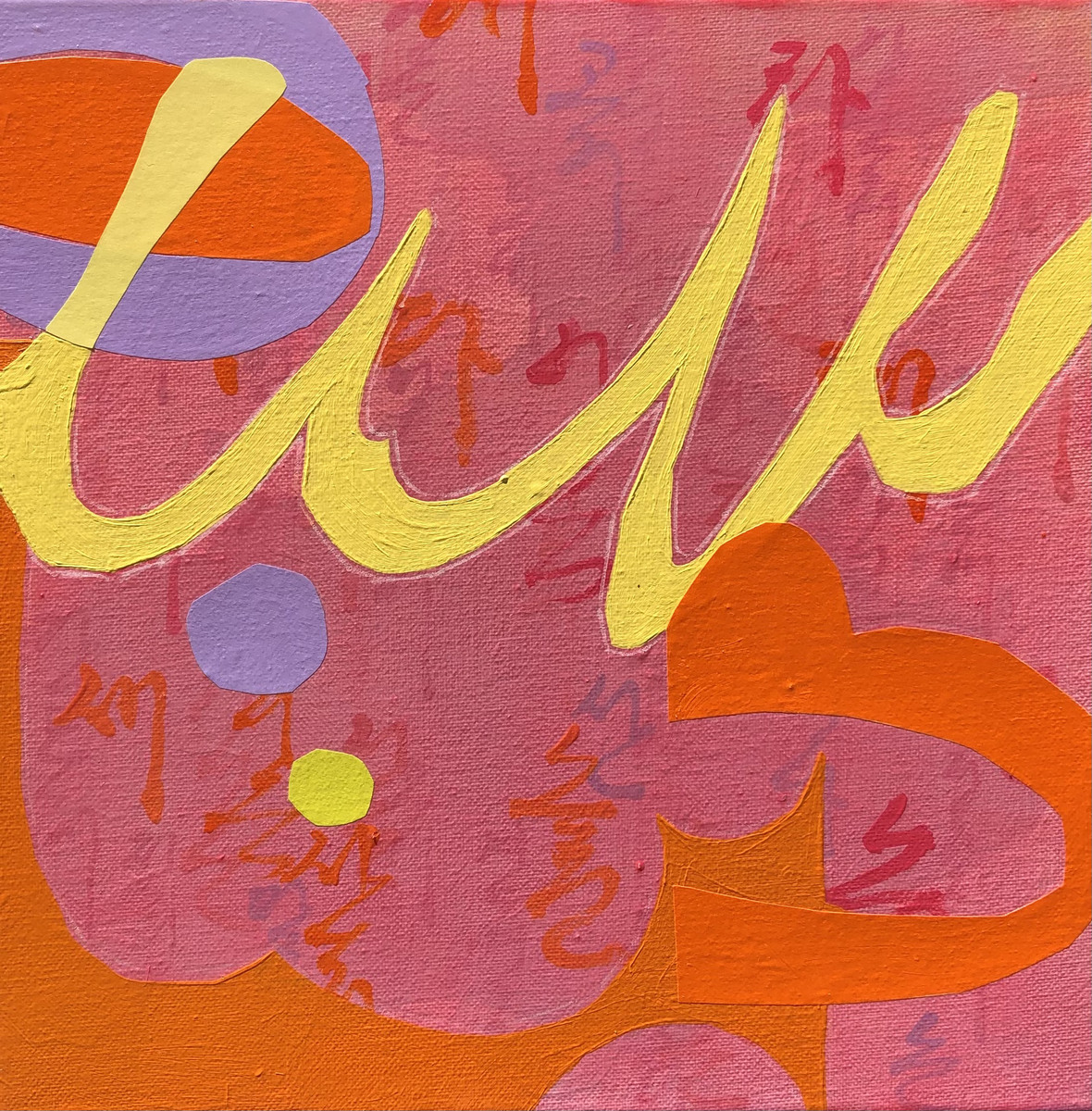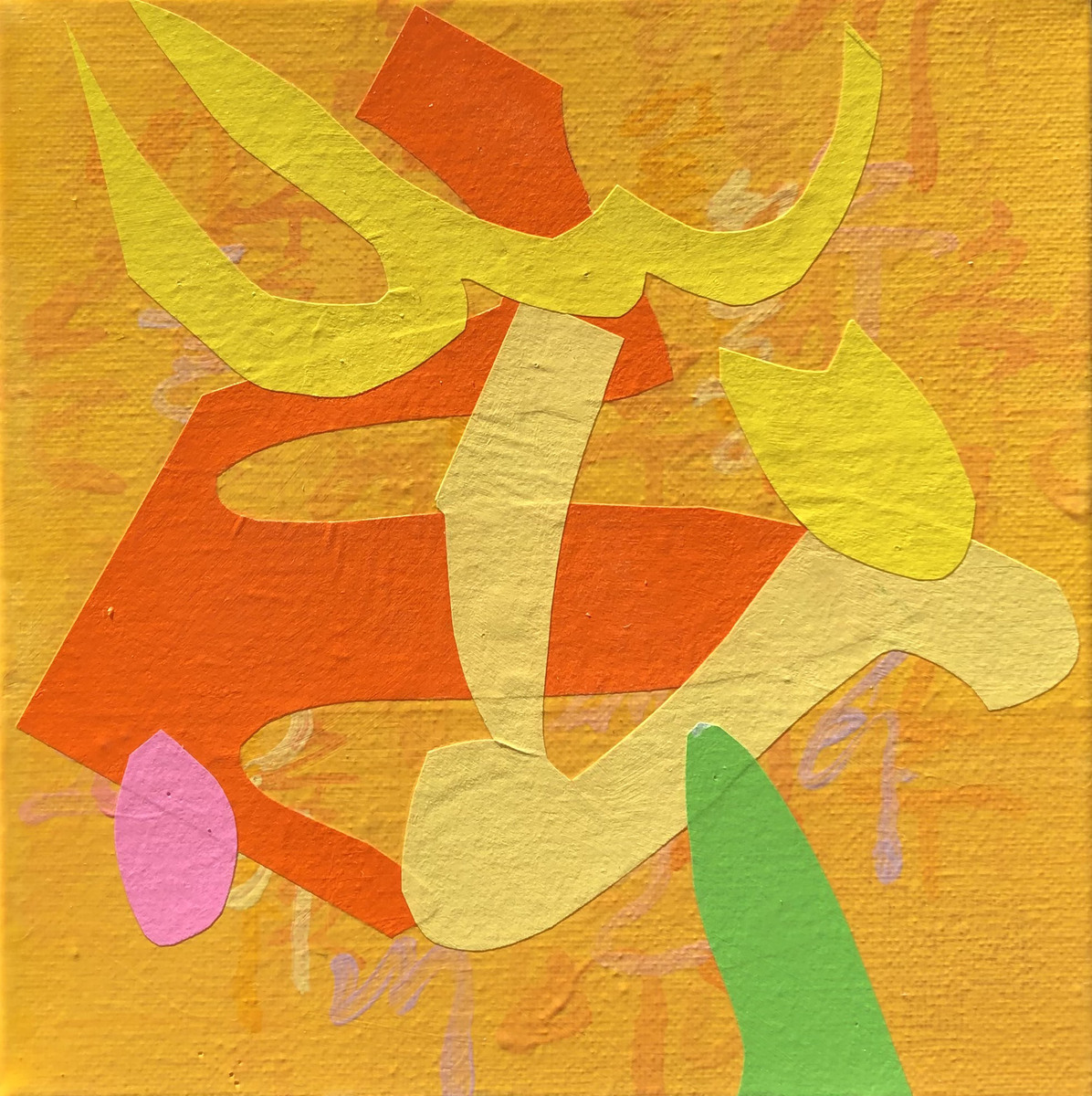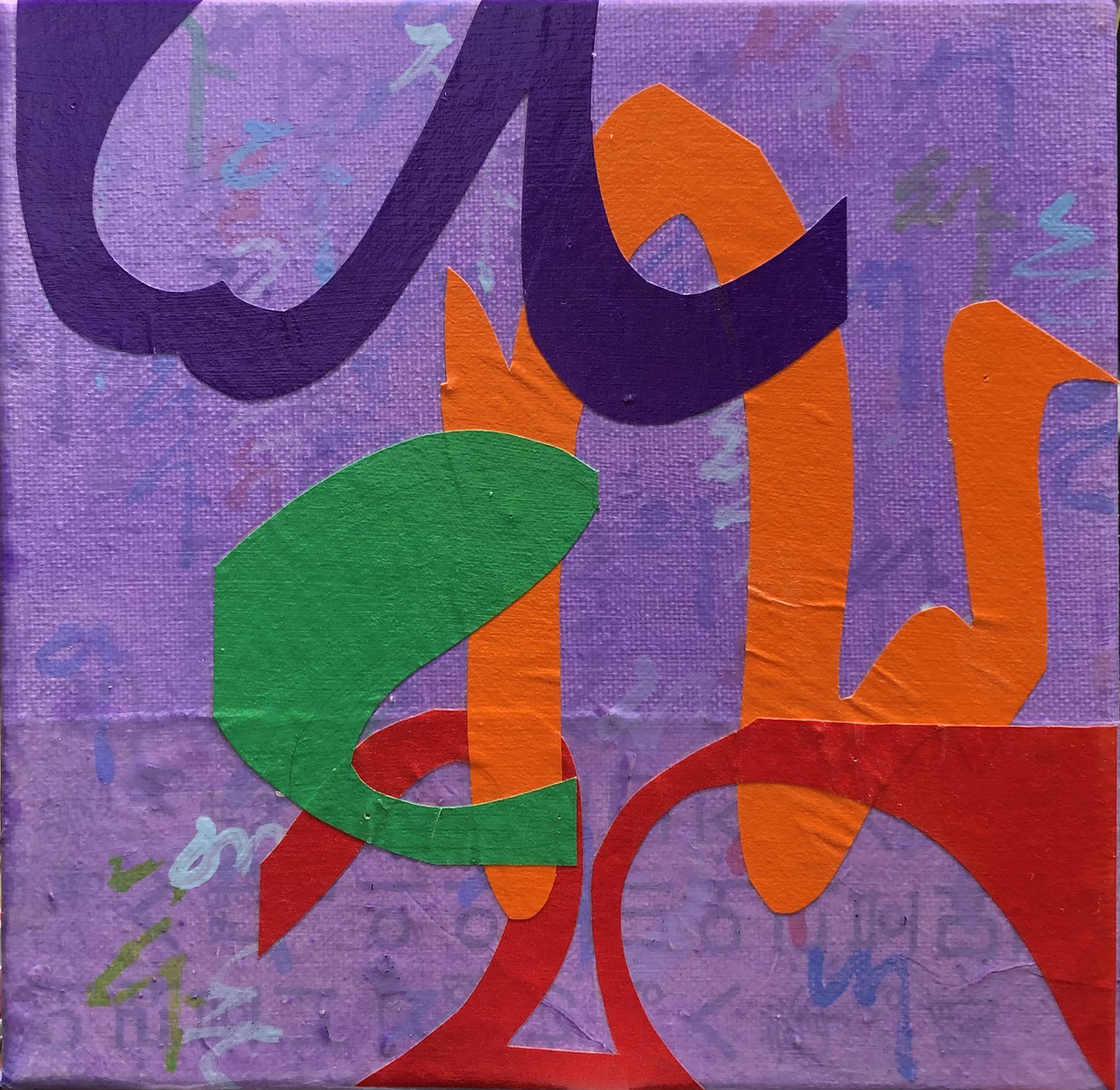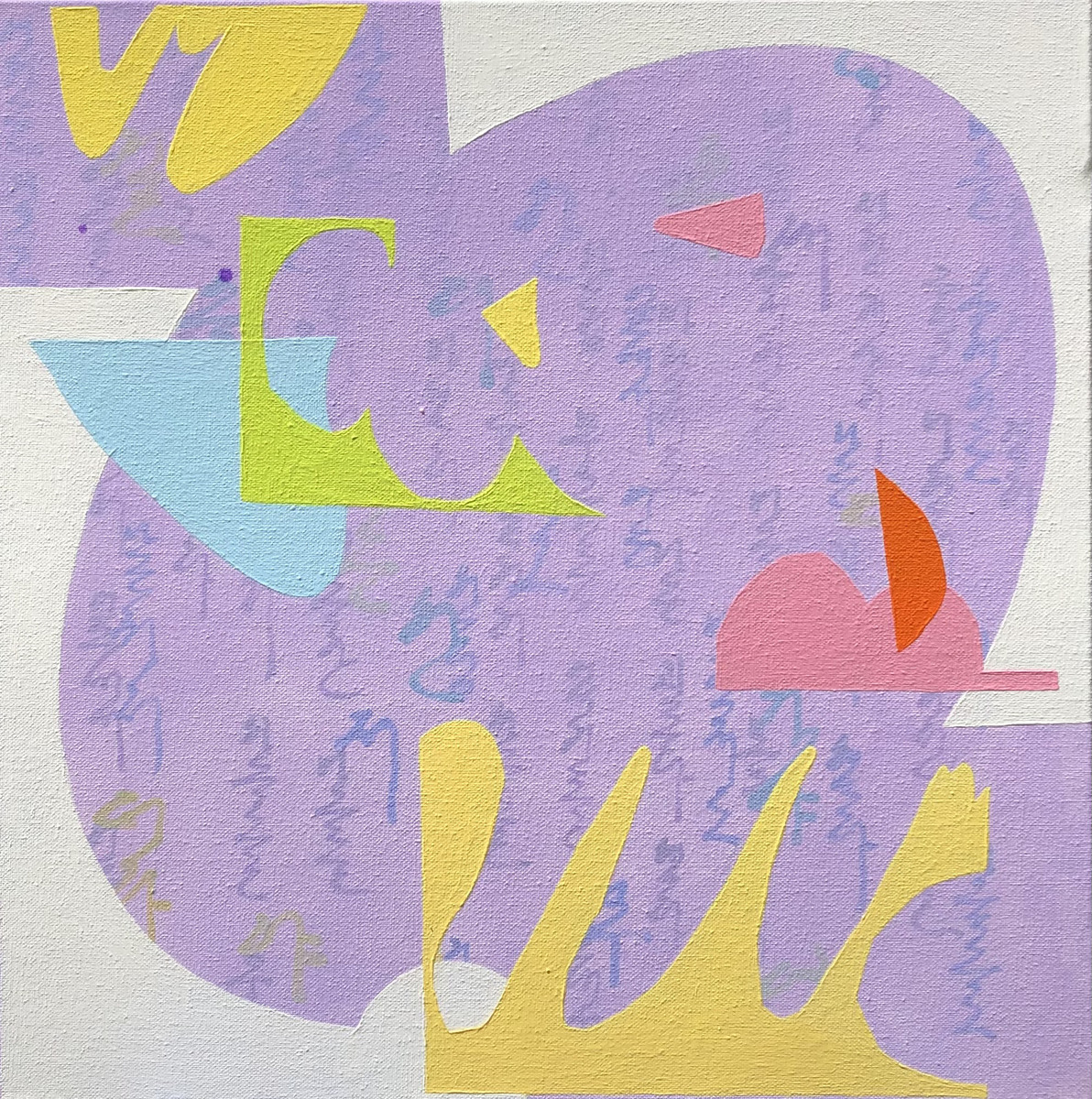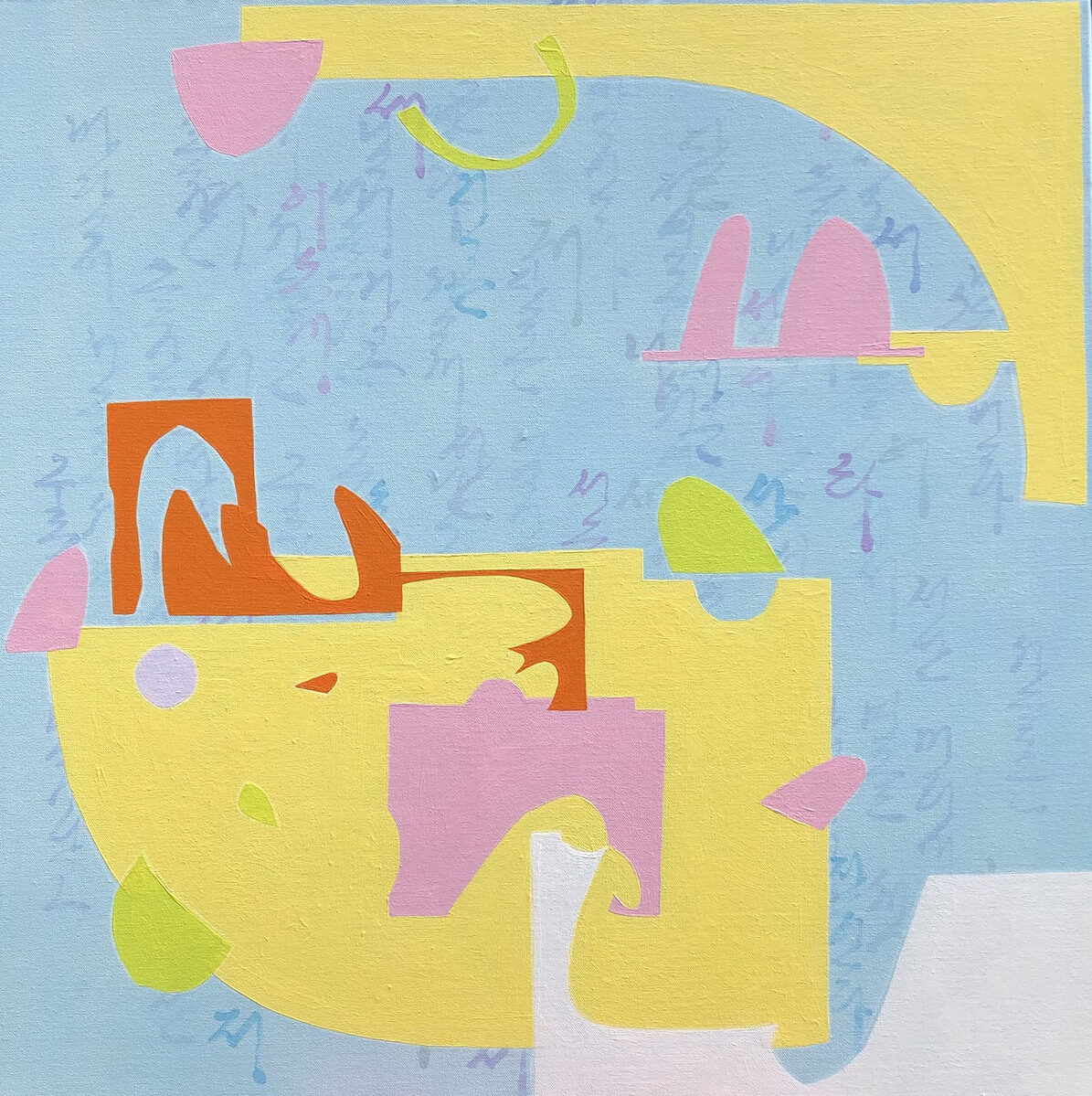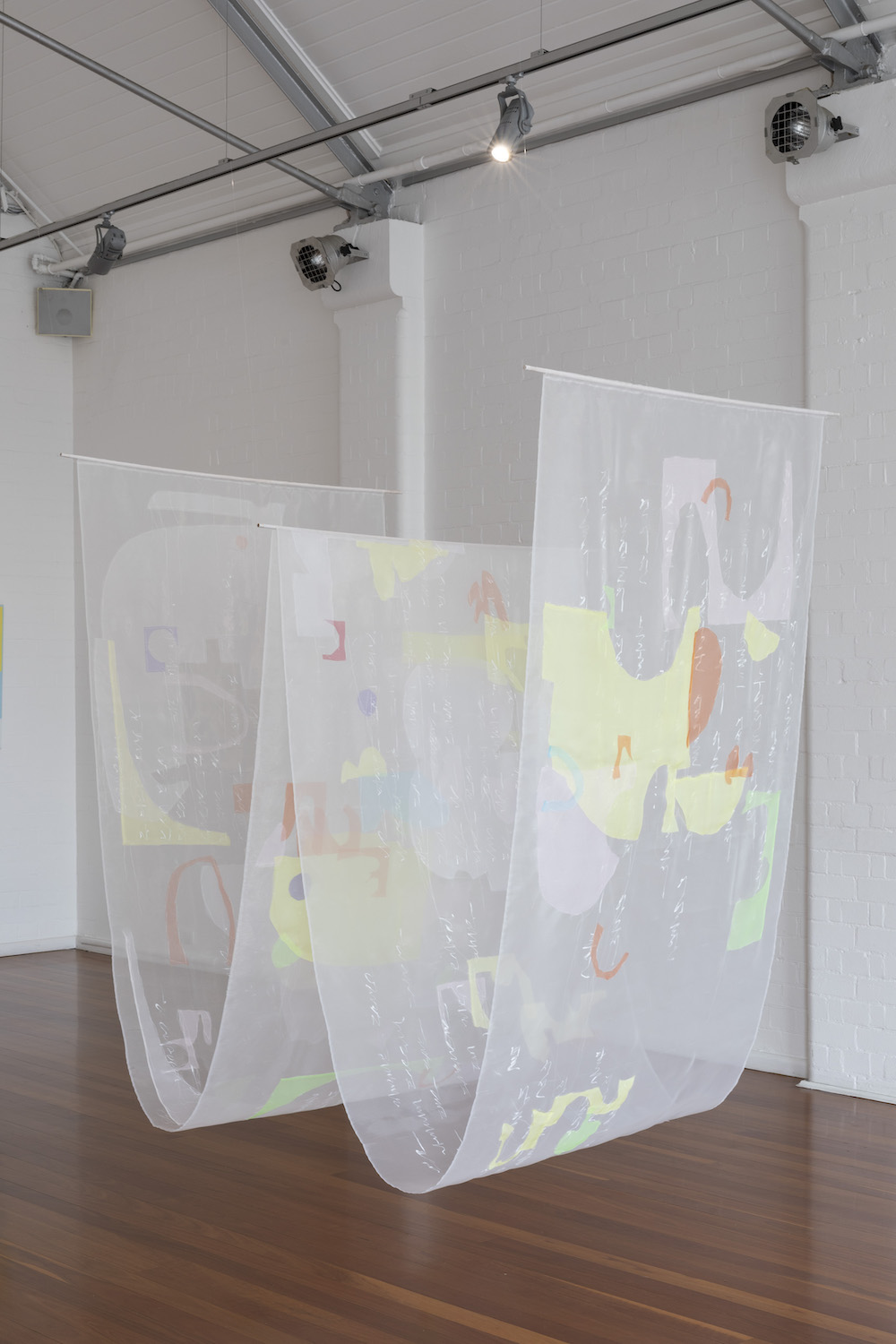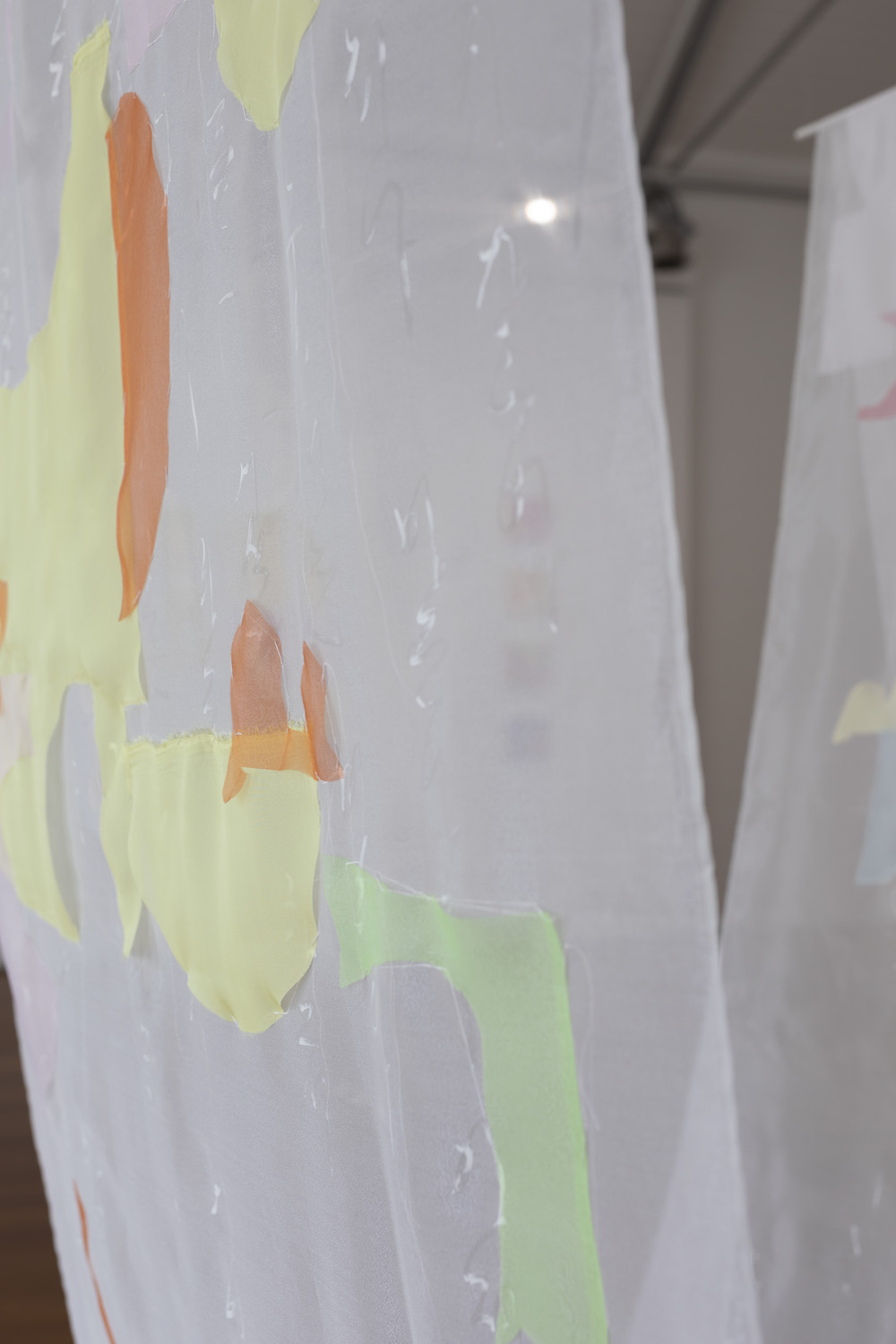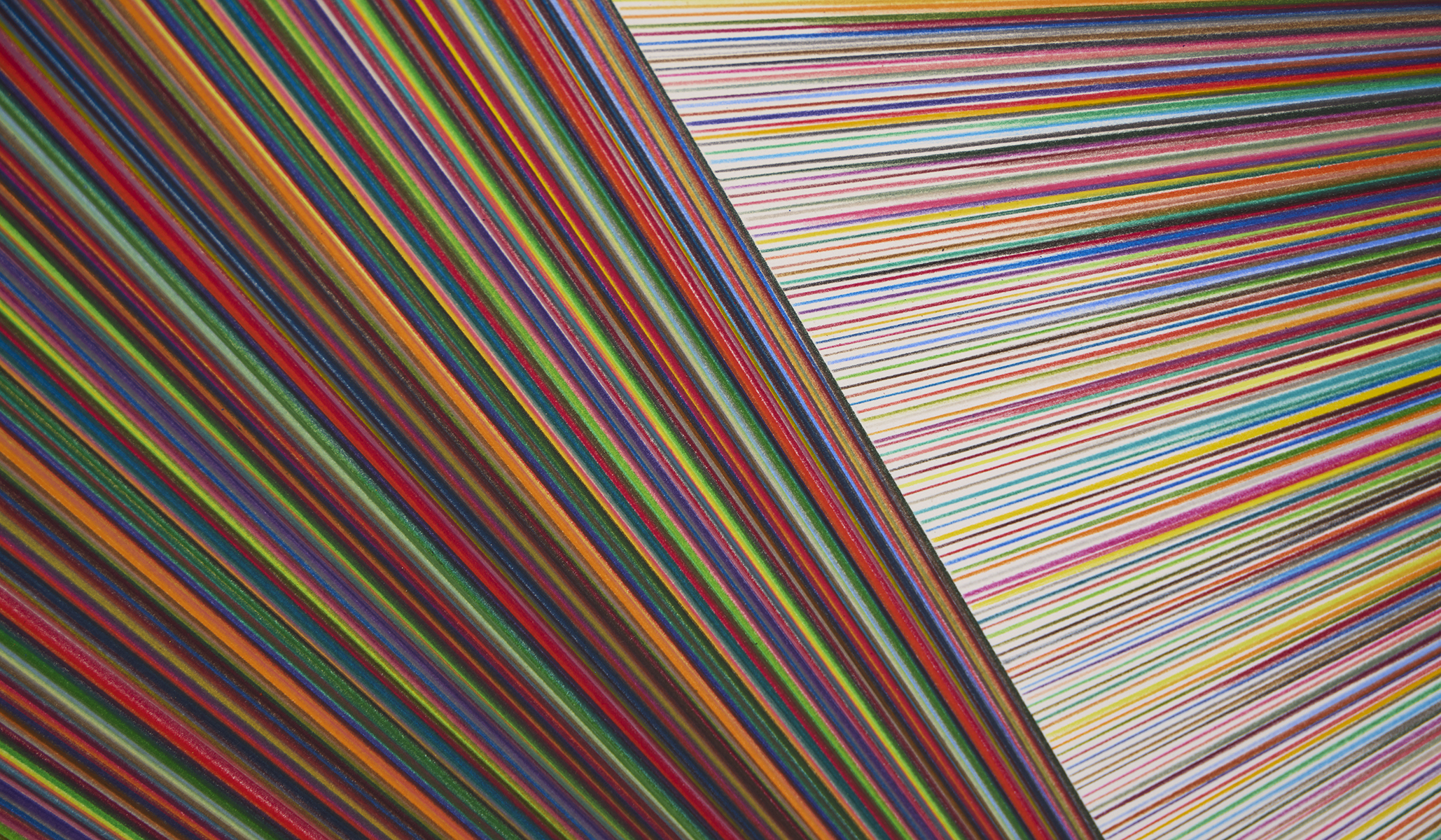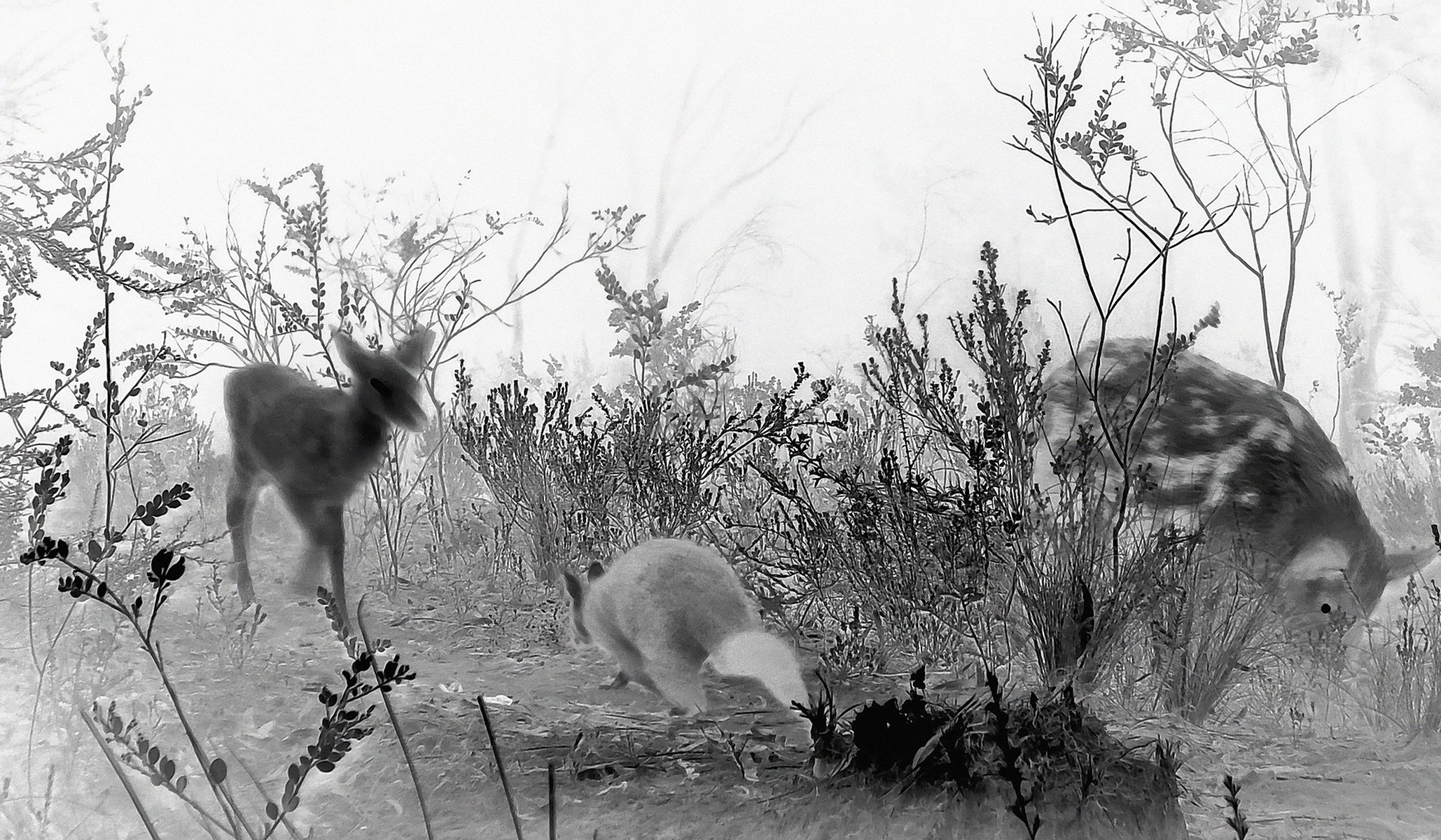Artereal Gallery is excited to present Fragments of Memories a solo exhibition by Hyun-Hee Lee.
Exhibition Opening Event: Saturday 3 February from 2 – 5 pm.
“Just as an artisan works at a gold shop and collects gold powder for a lifetime to make a golden rose, so is the work of an artist’. After carefully collecting and filtering the fragments of memories, the artist creates a work that contains the artist’s entire life.
This work is inspired from childhood and adolescent memories, a fundamentally important period influencing much of my life. The collection of these memories, often unreliable and fragmented, are filtered throughout my work and expressed as broken and cut pieces of my personalised Korean script, manipulated and re-assembled to create a new story.
Through the poems that influenced me during my adolescent years I learned the importance of those pure and innocent memories and how we can carry them deep in our hearts for our entire life. The colours that I use are derived from those moments in time which have stayed in my mind and so have become indelible in my story telling. Moreover, the shapes collectively form parts of poems that I have written and like puzzle pieces re-form in harmonious combinations to express my life. The cut-out style positive and negative shapes reflect the importance not only of what we remember, but also of what we have forgotten.
The memories of these times past inspire a sense of comfort and provoke cathartic and meditative emotions in me, ultimately acting as a conduit to my family and Korean culture.”
Hyun-Hee Lee – Artist Statement
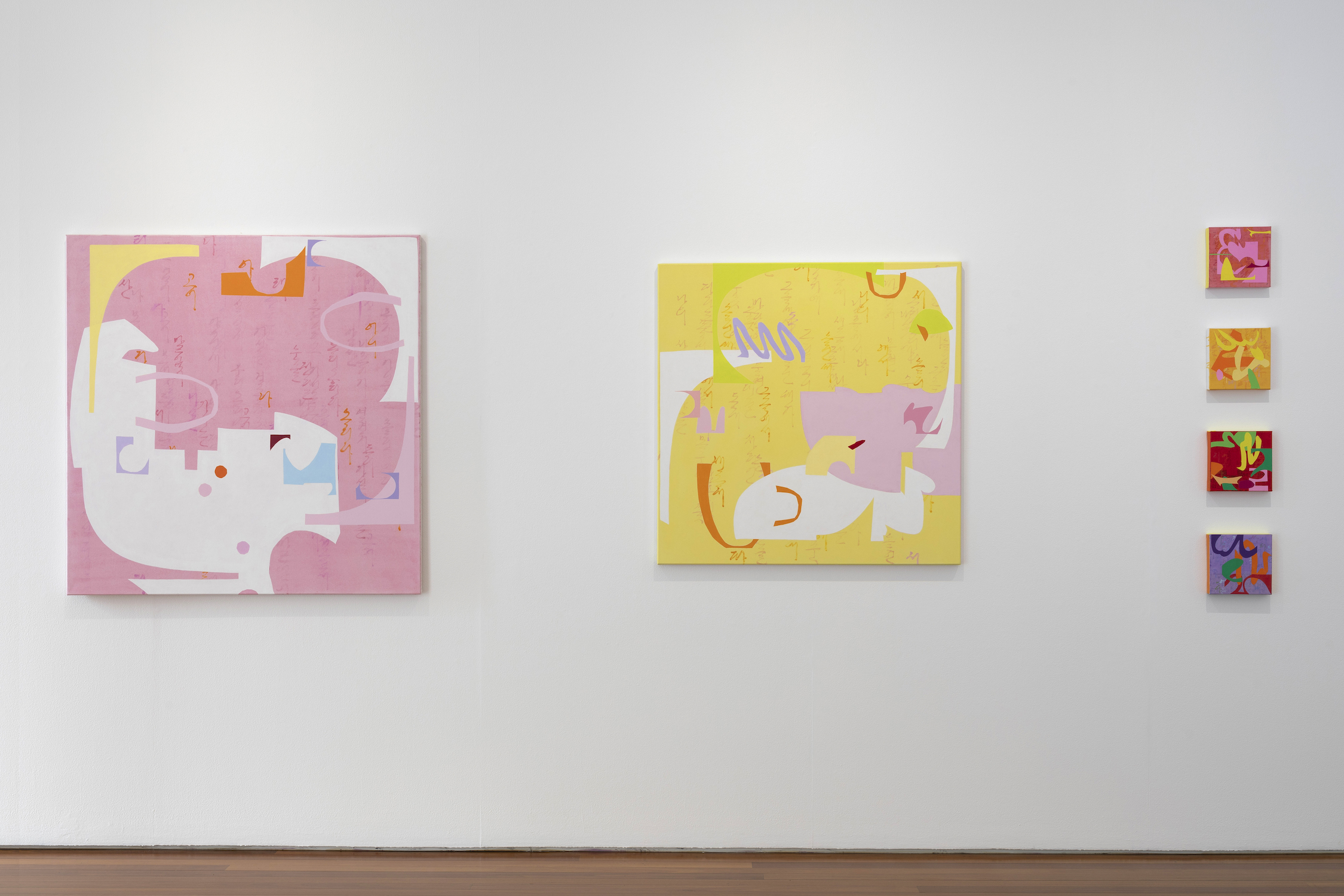
Memories, although often fluid and transitory, are an intrinsic part of our life experience and serve to frame our sense of self and understanding of the present.
Fragments of Memories is filtered through random incidents and recollections from Hyun-Hee Lee’s Korean childhood and adolescence and reveres the ways memories are carried deep in our hearts for our entire life. This interplay between memory, imagination and creativity is vital to Hyun-Hee Lee’s artistic expression across decades of her art practice.
It is a way of reconciling her childhood and adolescence in Korea with relocation to Sydney as a young adult and single mother, facing the challenge of cultural displacement and forging an identity as an artist in Australia while retaining and venerating her Korean heritage.
Memories are also an avenue towards reconciling her twin Buddhist and Christian faiths, philosophies, and spiritual observances which she honours in daily routines of meditation, prayer and mindfulness. These cherished rituals, ideas and aspirations manifest throughout her artmaking. Hyun-Hee Lee’s memories, many vivid, others faded, are precious and integral to her art and for retaining and maintaining beloved connections across the duration of time and beyond continents.
Reminiscence of child’s play is inferred in her painted collages on canvas with their contemplative cutting out, shaping, folding, colouring and placing. In the way that there are many disparate parts to the adults we become, her shapes are both positive and negative and acknowledge things remembered, forgotten – or those simply let go.
The colours used derive from moments in time which have stayed in the artist’s mind and their palette has become indelible in her story telling. Predominantly pastel hues, they are muted with white, culturally the colour of innocence, and for a long time the traditional colour of mourning for Koreans. Pink also pervades. Appropriately for memory, it is attributed in Korea as a colour of universal love, friendship, harmony and inner peace and the colour of “eternal blossom that never fades”.
Writing is a significant source for the words and ideas that shape us and is integrated as both lines of remembered poems from the artist’s early life or verses she has written herself along with a visual mode of text-style mark-making. Lee’s distinctive personalised quasi-Korean-style of script is rendered as glyphs that are visually expressive of underlying emotions and manipulated and re-assembled on whim. The calligraphic marks appear deceptively authentic but perversely are illegible to both Korean speakers and non-speakers alike.
“Fragments of Memories”, the ethereal ‘hanging poetry’ installation that also takes the name of the exhibition, mirrors the canvases. It is a suspended near-transparent drape of fine white Korean silk overlaid with trailing passages of pale painted calligraphic text and a random patchwork of appliqued shards of soft pastel-coloured silks, diaphanous chiffon and sheer organza. Hand embroidered in silken thread, each meditative stitch carries a precious memory across time and place.
For Hyun-Hee Lee, memories impart a sense of inspiration and comfort. ”They provoke cathartic and meditative emotions in me, ultimately acting as a conduit to my family and Korean culture”. A connection that in recent years has extended to her exhibiting with a commercial gallery in Seoul and in 2022 being invited to show along-side international artists of the ilk of Nam June Paik in the prestigious public exhibition Korean Diaspora – Ricepaper Airplane, a special exhibition celebrating the 120th anniversary of Korean immigration history.
Barbara Dowse
Curator
All prices are in Australian dollars and inclusive of GST.
Delivery costs not included – please contact the gallery for assistance with delivery.
Prices are correct at the time of publication but may be subject to change without notice.
For sales enquiries email: info@artereal.com.au
Azaleas
paper collage, acrylic on canvas
31 x 31 cm
Star song
paper collage, acrylic on canvas
31 x 31 cm
Prologue
acrylic on canvas
46 x 46 cm

